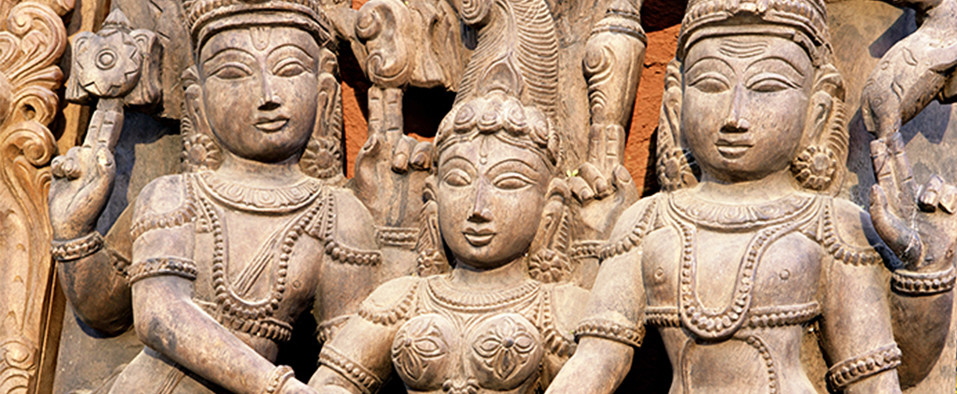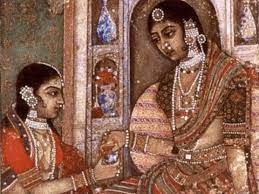Welcome to a brand new fashion month on my blog page! This month is special for all Indians like me because it is the anniversary month of India’s independence. So this month I will be writing about clothing and fashion in ancient India, which is a vast, rich, complex, and diverse subject.
As a country, India has completed 75 years but before the existing borders were formed, the Indian subcontinent had a long and glorious past going back over five thousand years, with its own distinct culture and clothing. In this blog, I will focus on some of the highlights of clothing and accessories from the different regions of ancient India.
ABORIGINAL INDIGENOUS CULTURES
Part of east and central India belongs to the oldest landmass of the world that emerged from the seas more than 40 million years ago. There were several indigenous tribes who lived on these lands and many of them thrive even today with their own distinct clothing, fabrics, and patterns on clothing. Actual clothing items from that hazy past are of course not available today, but exquisite cultural motifs and patterns of those times can be traced to works of Indian designers even today.

The ‘Warli’ print is derived from tribal art of the same name with roots in the Neolithic period
HARAPPAN CIVILIZATION
One of the oldest civilizations of the world, the Harappan or the Indus Valley civilization thrived primarily around the river Indus over three thousand years ago. Trading cultures and commerce with civilizations of Egypt, China, and Mesopotamia, the people of the Indus valley civilization lived in planned cities, enjoyed lifestyle luxuries, and knew the use of a vastly different range of fabrics and designs. Men wore shawls as a mark of distinction and women usually wore flared, knee-length skirts, with or without headdresses depending upon whether the occasion was formal or casual. The common man universally wore cotton, a fabric that was widely grown and woven for over 5000 years. Women wore skirts of the same material. That both men and women wore extensive jewelry is also well represented.


Figurine of a woman or ‘goddess’ in skirt and jewelry Bust of a man in a shawl with trefoil embossed fabric
EARLY AND LATER VEDIC PERIOD
Around 1400 years before the birth of Christ and the fall of the Indus Valley civilization, the Aryans came to India. Nomads and nature worshippers who lived simply, their clothing was several notches below the Indus Valley people who lived before them. The early Vedic period does not reflect any notable fashion inputs, but gradually, as they settled down on the vast Gangetic plains and beyond, their living habits changed, and with that, there was a definite upside to their clothing. By the time of the great epics of ‘Ramayana’ and ‘Mahabharata’, affluent Indians were dressing in wool, fur, jewels, fine silk, and other printed cloth.

Sculptor’s imagination of Ram with wife Sita and brother Lakshman: clothing, headgear, and ornaments
THE INVASION OF ALEXANDER AND POST MAURYAN ERA
Alexander’s invasion around two thousand three hundred years ago was a turning point in India’s existing history and culture. This was the first time Indian and Greek cultural elements were in close contact, and the impact was obvious mostly in the dressing department. As Greek soldiers, ambassadors and traders began exploring India’s immense wealth, textiles, apparel, and accessories, India became legendary across the world. More importantly, Greek influences in clothing, especially drapes, became an integral part of India’s culture.
Fabrics were draped on the body differently by men and women, held in place by a belt around the waist which was also sometimes a decorated accessory. The ubiquitous ‘sari’ of Indian women also makes its appearance over time—a unique six to nine yards long piece of fabric draped in various ways by various regions—a trend common even today.

Sculpture from the Mauryan period depicting clothing, headgear, ornaments, and accessories, notably the Hellenic drape of the flowing lower garment held in place with an ornamental girdle
ANCIENT INDIAN DRESSING TILL THE ADVENT OF ISLAM
By the time the great empires of the Mauryans, Harshavardhan, the Guptas, and the Palas in Northern India flourished, India was trading with most countries of the world and the finest of Indian minerals, spices, precious gems, and even more precious textiles were finding places in the courts of kings and princes of continental Europe, Africa, and the Mediterranean countries.

Image of woman and her handmaiden, presumably royalty, showing the evolved sari with a blouse or ‘choli’ along with jewelry
In India, silk, and cotton reigned as fabrics with drapes and accessories of different types across regions. Short and close-fitting garments were the trend in North India while flowing lower body garments and upper body shawls or scarves were the chosen attire of east and south. Turbans were worn among men in areas of the North, and long hair unadorned with any headgear was to be found in the east.
However, with the coming of Islam, Indian apparel got several variations added on to them—more of which would be continued in my next piece.
By Parna Das
Recommended1 recommendationPublished in Our Fashion Passion, Uncategorized


